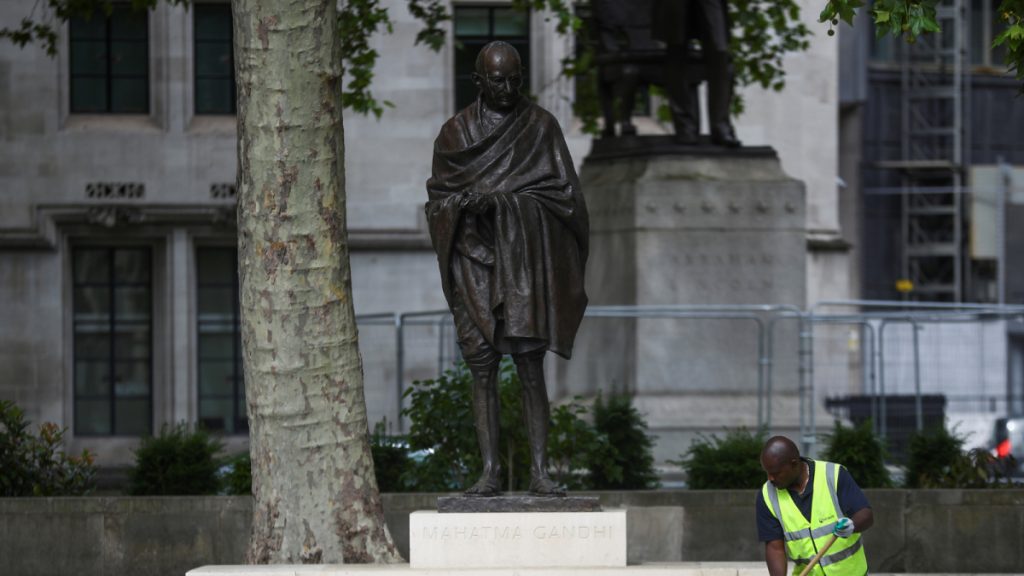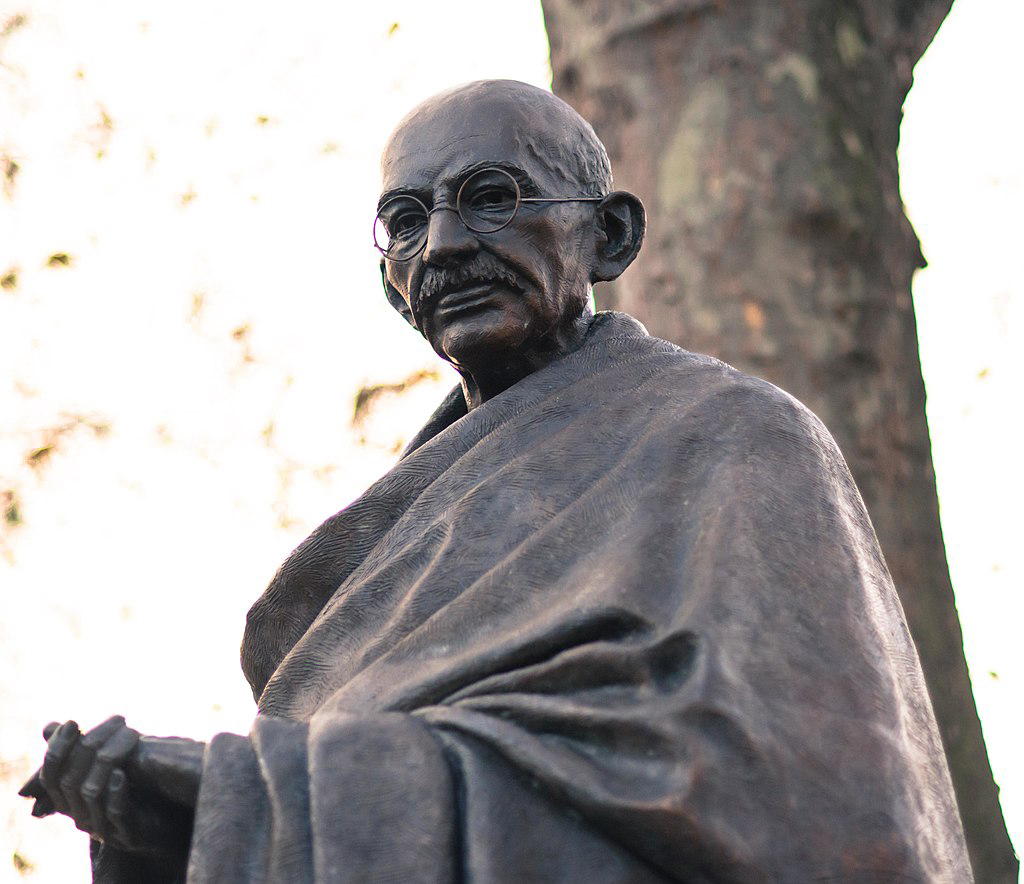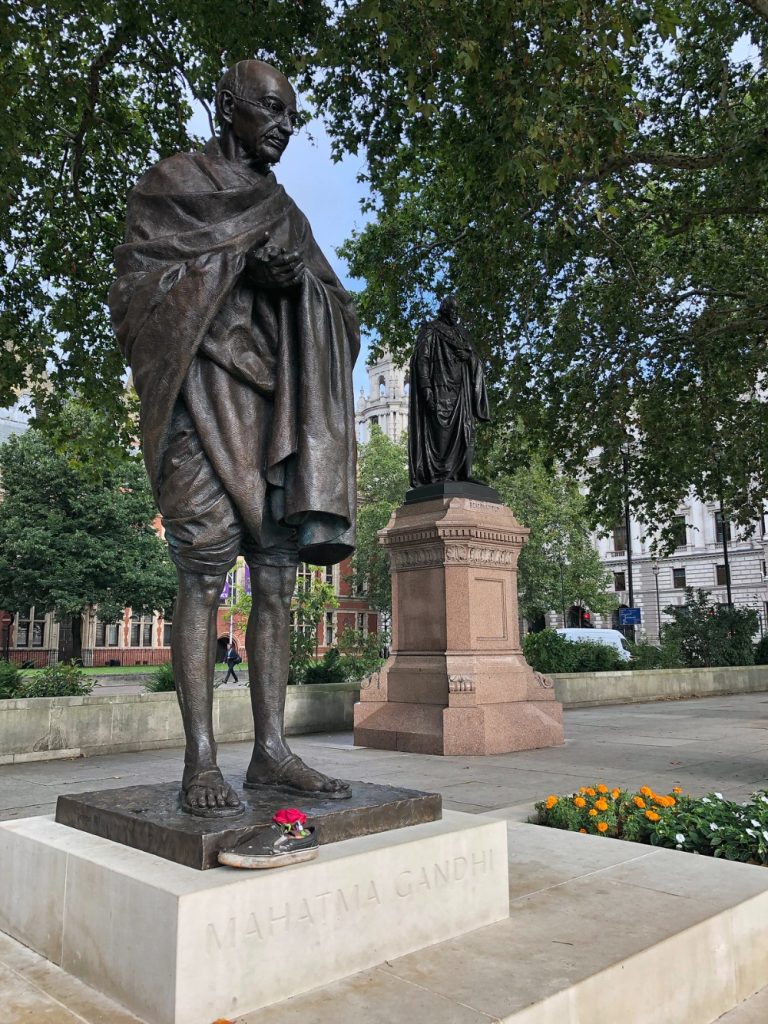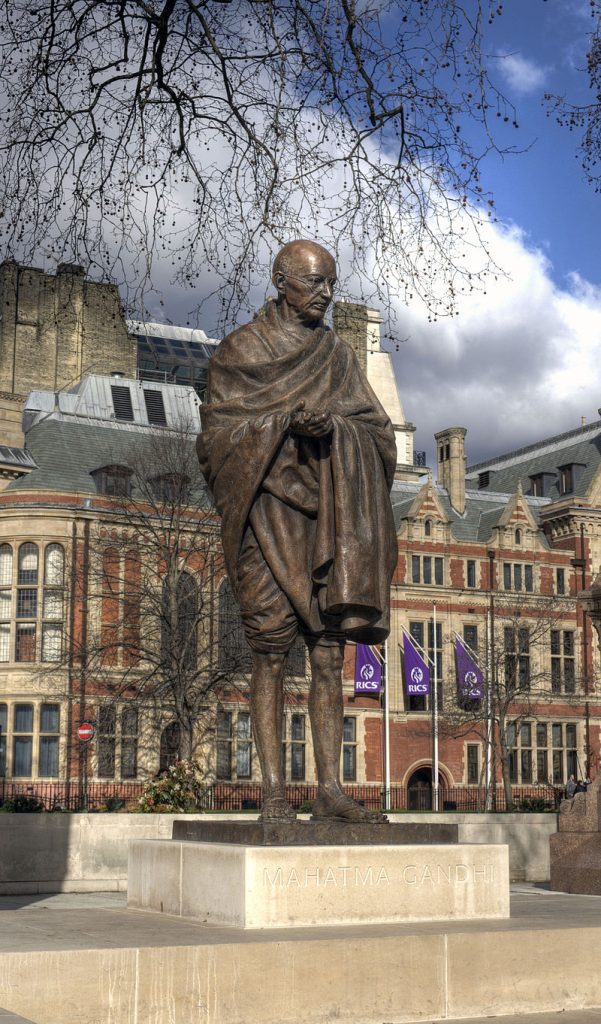Introduction

Parliament Square in London is one of the symbols of British politics, gathering statues of numerous important political leaders. One of the eye-catching statues is that of Mahatma Gandhi, created by sculptor Philip Jackson. This Statue of Mahatma Gandhi represents a symbol of nonviolence, peace, and justice, providing profound thinking and inspiration for people around the world. This article will delve into this statue, exploring its historical, artistic value, and symbolic significance for the peace movement.
Gandhi: The Soul of India’s Independence Movement
Mahatma Gandhi, also known as the father of India, was one of the greatest leaders of the 20th century. He was one of the main promoters of India’s independence movement and a symbol of nonviolent resistance. Gandhi was known for his wisdom, perseverance, and moral principles, and his ideas influenced the entire world, becoming a source of inspiration for the peace movement.
The Creation and History of Statues

This Gandhi statue was unveiled in 2015 and commissioned by the British government to commemorate the 147th anniversary of Gandhi’s birth by Philip Jackson. Jackson is a famous British sculptor known for his high attention to detail and exquisite craftsmanship. This statue is one of his masterpieces.
The choice of location for the statue also has symbolic significance, as it is located in Parliament Square in London, adjacent to the House of Parliament. This position represents the core of democracy and political freedom, introducing Gandhi’s ideas and the principle of nonviolent resistance into the center of British politics.
The Artistic Value of Statues

This statue is full of artistic value, and the following are some prominent features:
Vivid expressiveness: The sculpture presents the image of Gandhi in a realistic way, dressed in typical traditional Indian clothing, holding a cane, and with a calm and firm expression.
Exquisite details: The details on the statue are very exquisite, from Gandhi’s eyes to his clothing wrinkles, all reflecting the sculptor’s high attention to details.
Sculpture posture: The posture of Gandhi’s statue is very symbolic. He holds a cane and emphasizes the principles of nonviolence and peaceful resistance, which are also the core values that Gandhi adhered to throughout his life.
Cultural significance and symbolic themes
This Gandhi statue is not only a work of art, but also carries profound cultural and symbolic significance:
Peace and non violence: The statue is a symbol of Gandhi’s philosophy, emphasizing the principles of peace, non violence, and justice, which still hold great importance in today’s world.

History of India and Britain: The existence of statues represents the historical connection between India and Britain, especially the challenge posed by the Indian independence movement to British colonial rule.
Global Peace Movement: Gandhi’s philosophy of nonviolence has had a profound impact on the global peace movement, as this statue inspires people to pursue peace, justice, and human rights.
Conclusion
The statue of Mahatma Gandhi is a shining pearl in London’s Parliament Square, representing the wisdom and moral principles of an outstanding leader and philosopher. The existence of this statue reminds us that nonviolence, peace, and justice are the forces that improve the world. It forever stands at the center of British politics, conveying a message of peace to people. The legacy of Mahatma Gandhi will always inspire us to think about how to build a better world based on peace and justice. This statue is a tribute to a great leader and an eternal commemoration of peace and humanitarianism.

